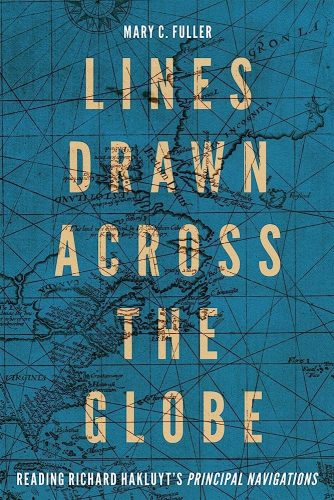
“Lines Drawn across the Globe,” a new book by MIT Professor Mary Fuller, looks at the worldwide vision of English exploration proponent Richard Hakluyt.
In the 1550s, a series of English sailing expeditions went searching for a supposed “Northeast Passage” to China, which they hoped to locate near the top of Europe. No one found it — but English sailors did figure out how to routinely reach Russia. The subsequent founding of the Muscovy Company, the first joint stock trading company, provided a model for many similarly-structured later enterprises.
“England opened and sustained a direct trade with Muscovy,” says MIT professor Mary Fuller. “The English had been voyaging in a scattershot way. But in the process of this concerted attempt in the 1550s to discover a new route to China, English navigators learned new techniques of mathematical navigation. And so they skilled up. And people on the investment and trade side began to create the management and financial infrastructure to support sustained enterprises.”
Today, these are not especially well-known voyages. But to English cleric Richard Hakluyt (1553-1616), one of his country’s leading advocates of overseas exploration, they were highly significant. Spain and Portugal could boast of discovering sea routes to India and the Pacific; the Russian voyages, he claimed, were a sign the English had begun to rival them.
Hakluyt prominently included accounts of those expeditions in a remarkable compendium he published in 1600, “The Principal Navigations, Voyages, Traffiques and Discoveries of the English Nation,” a three-volume, 2,000-page attempt to compile records of all travel English merchants and mariners had taken beyond Europe.
“There’s enormous pride in this,” says Fuller, a professor in MIT’s Literature section who is also chair of the faculty at MIT. “Even though the northern route hadn’t been found, he wants to claim that the effort to find it was itself a world-changing voyage — England was in the game.”
Now in her just-released book, Lines Drawn across the Globe, published by McGill-Queen’s University Press, Fuller provides a new reading of Hakluyt’s famed compendium, broadening our view of his aims, and situating his work in a historical moment when England’s ability to explore the world was unproven. Many things that mattered to Hakluyt, including these 1550s voyages, may be forgotten today, but Fuller’s book reconstructs his priorities, worldview, and methods in rich detail…
… But “Principal Navigations” contains more than these famous stories, and Lines Drawn across the Globe contends that visions of Hakluyt’s vast book as the simple expression of an anti-Catholic, Elizabethan triumphalism miss the mark. For one thing, as Fuller writes, “Hakluyt’s compilation had a more expansive scope than its titular focus on the navigations of the English nation would suggest.” In Hakluyt’s volume on voyages to the Americas, the “Principal Navigations” included substantial translated accounts of French, Portugese, and Spanish voyages. Hakluyt was not only recording English exploits; he was collecting knowledge, including knowledge of what other nations had done.
Written by MIT News Office | Read more here…
More about Lines Drawn Across the Globe here…
